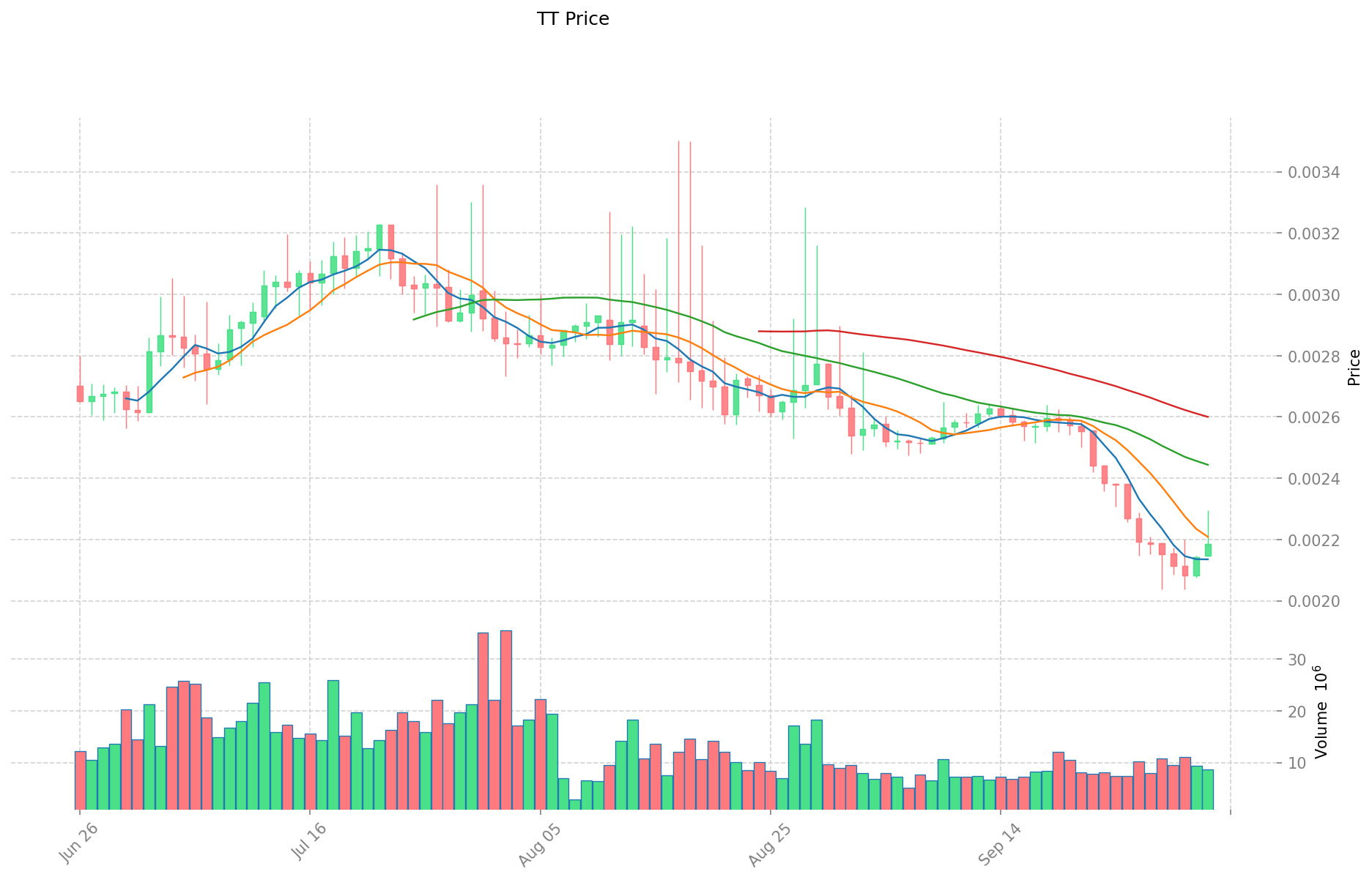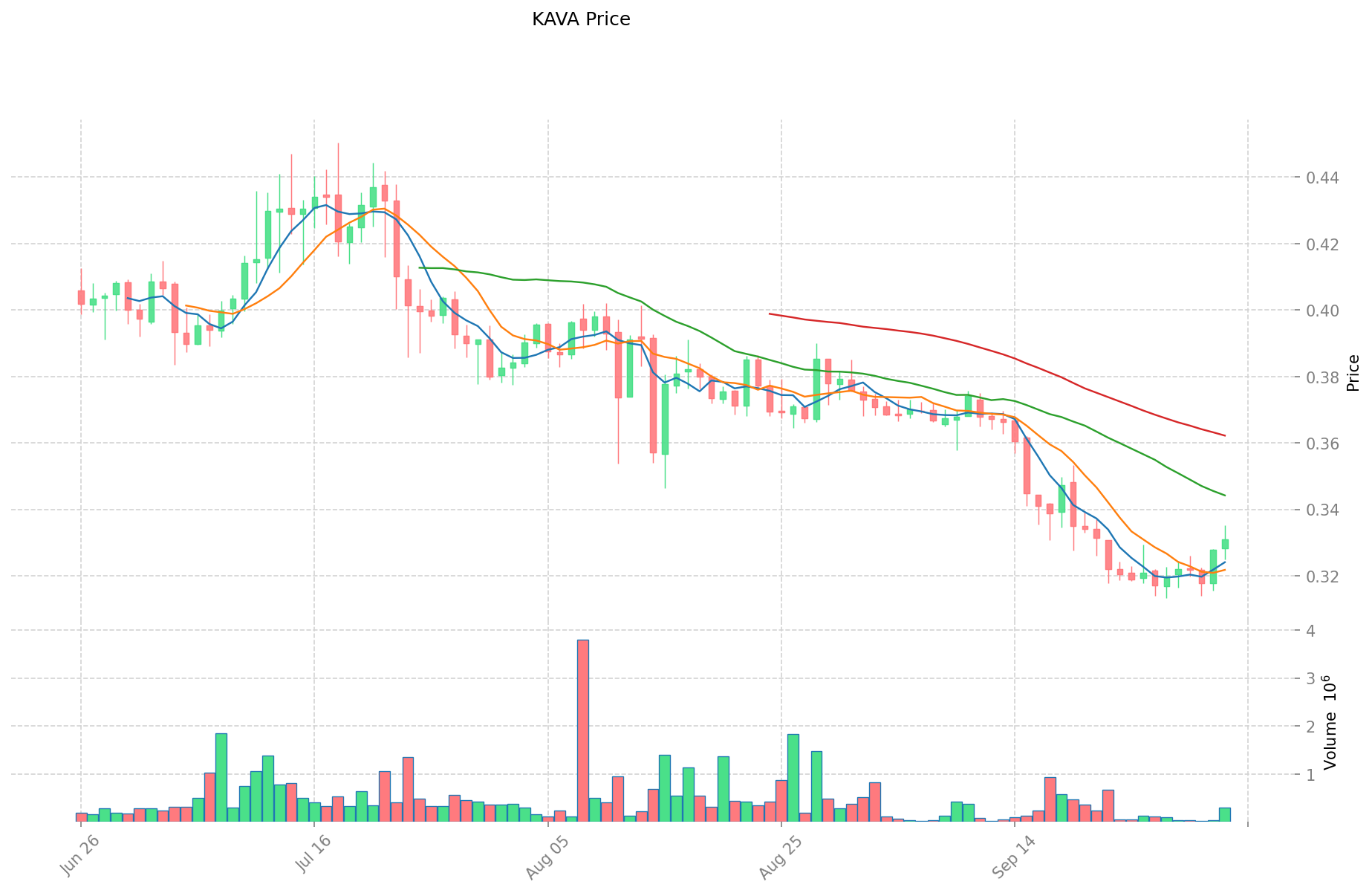TT vs KAVA: Comparing Performance, Features and Investment Potential of Two Leading Crypto Platforms
Introduction: TT vs KAVA Investment Comparison
In the cryptocurrency market, ThunderCore (TT) vs Kava (KAVA) comparison has always been a topic that investors can't avoid. The two not only have significant differences in market cap ranking, application scenarios, and price performance, but also represent different positioning of crypto assets.
ThunderCore (TT): Since its launch in 2019, it has gained market recognition for its high-performance, EVM-compatible public blockchain platform.
Kava (KAVA): Since its inception in 2019, it has been hailed as a cross-chain decentralized financial platform, providing mortgage and stablecoin services for mainstream digital assets.
This article will comprehensively analyze the investment value comparison between TT and KAVA, focusing on historical price trends, supply mechanisms, institutional adoption, technical ecosystems, and future predictions, and attempt to answer the question that investors care about most:
"Which is the better buy right now?"
I. Price History Comparison and Current Market Status
ThunderCore (TT) and Kava (KAVA) Historical Price Trends
- 2019: ThunderCore launched its mainnet, initiating its price trajectory in the market.
- 2021: Kava reached its all-time high of $9.12, demonstrating significant growth.
- Comparative Analysis: During the recent market cycle, TT declined from its peak of $0.052424 to a low of $0.00209495, while KAVA experienced a similar downturn from its high of $9.12.
Current Market Situation (2025-10-03)
- ThunderCore (TT) current price: $0.0022
- Kava (KAVA) current price: $0.3319
- 24-hour trading volume: TT $19,516.51 vs KAVA $39,122.86
- Market Sentiment Index (Fear & Greed Index): 64 (Greed)
Click to view real-time prices:
- View TT current price Market Price
- View KAVA current price Market Price


II. Core Factors Influencing TT vs KAVA Investment Value
Supply Mechanism Comparison (Tokenomics)
- TTD: Primarily driven by oil and natural gas production in Trinidad and Tobago's economy
- KAVA: Influenced by macroeconomic trends, regulatory policies, and technological innovation
Institutional Adoption and Market Applications
- Institutional Holdings: Information not provided in the reference materials
- Business Applications: TTD supports key industries including tourism, manufacturing, and services in Trinidad and Tobago
- National Policies: Regulatory policies influence KAVA exchange rates, though specific details are not provided
Technical Development and Ecosystem Building
- Technical developments for both assets are not specifically detailed in the reference materials
- Ecosystem information for both assets is limited in the provided references
Macroeconomic Factors and Market Cycles
- Inflationary Environment Performance: Information not specifically provided
- Macroeconomic Monetary Policy: KAVA exchange rates are influenced by macroeconomic trends
- Geopolitical Factors: TTD serves as the main medium of exchange in Trinidad and Tobago, supporting the country's key industries
III. 2025-2030 Price Prediction: TT vs KAVA
Short-term Prediction (2025)
- TT: Conservative $0.00200382 - $0.002202 | Optimistic $0.002202 - $0.00328098
- KAVA: Conservative $0.212416 - $0.3319 | Optimistic $0.3319 - $0.461341
Mid-term Prediction (2027)
- TT may enter a growth phase, with expected prices ranging from $0.001939878324 to $0.004582126386
- KAVA may enter a consolidation phase, with expected prices ranging from $0.2461426823 to $0.4413592924
- Key drivers: Institutional fund inflows, ETFs, ecosystem development
Long-term Prediction (2030)
- TT: Base scenario $0.004495355712182 - $0.006203590882812 | Optimistic scenario $0.006203590882812+
- KAVA: Base scenario $0.55485483444066 - $0.776796768216924 | Optimistic scenario $0.776796768216924+
Disclaimer: The above predictions are based on historical data and market analysis. Cryptocurrency markets are highly volatile and subject to rapid changes. These projections should not be considered as financial advice. Always conduct your own research before making investment decisions.
TT:
| 年份 | 预测最高价 | 预测平均价格 | 预测最低价 | 涨跌幅 |
|---|---|---|---|---|
| 2025 | 0.00328098 | 0.002202 | 0.00200382 | 0 |
| 2026 | 0.0039477456 | 0.00274149 | 0.0024125112 | 24 |
| 2027 | 0.004582126386 | 0.0033446178 | 0.001939878324 | 52 |
| 2028 | 0.00447861046509 | 0.003963372093 | 0.00265545930231 | 80 |
| 2029 | 0.00476972014532 | 0.004220991279045 | 0.002405965029055 | 91 |
| 2030 | 0.006203590882812 | 0.004495355712182 | 0.003011888327162 | 104 |
KAVA:
| 年份 | 预测最高价 | 预测平均价格 | 预测最低价 | 涨跌幅 |
|---|---|---|---|---|
| 2025 | 0.461341 | 0.3319 | 0.212416 | 0 |
| 2026 | 0.45214737 | 0.3966205 | 0.34902604 | 19 |
| 2027 | 0.4413592924 | 0.424383935 | 0.2461426823 | 27 |
| 2028 | 0.571390530084 | 0.4328716137 | 0.320324994138 | 30 |
| 2029 | 0.60757859698932 | 0.502131071892 | 0.48706713973524 | 51 |
| 2030 | 0.776796768216924 | 0.55485483444066 | 0.493820802652187 | 67 |
IV. Investment Strategy Comparison: TT vs KAVA
Long-term vs Short-term Investment Strategy
- TT: Suitable for investors focusing on high-performance blockchain platforms and ecosystem potential
- KAVA: Suitable for investors interested in cross-chain DeFi platforms and stablecoin services
Risk Management and Asset Allocation
- Conservative investors: TT: 30% vs KAVA: 70%
- Aggressive investors: TT: 60% vs KAVA: 40%
- Hedging tools: Stablecoin allocation, options, cross-currency combinations
V. Potential Risk Comparison
Market Risk
- TT: Relatively lower trading volume may lead to higher price volatility
- KAVA: Susceptible to broader DeFi market trends and sentiment
Technical Risk
- TT: Scalability, network stability
- KAVA: Cross-chain security, smart contract vulnerabilities
Regulatory Risk
- Global regulatory policies may have different impacts on both assets, particularly in the DeFi sector
VI. Conclusion: Which Is the Better Buy?
📌 Investment Value Summary:
- TT advantages: High-performance EVM-compatible blockchain, potential for ecosystem growth
- KAVA advantages: Established cross-chain DeFi platform, stablecoin services for mainstream digital assets
✅ Investment Advice:
- New investors: Consider a balanced approach, leaning towards KAVA for its more established presence in the DeFi space
- Experienced investors: Explore opportunities in both assets, with a focus on TT's potential for ecosystem expansion
- Institutional investors: Evaluate both assets based on specific portfolio needs and risk tolerance
⚠️ Risk Warning: The cryptocurrency market is highly volatile, and this article does not constitute investment advice. None
VII. FAQ
Q1: What are the main differences between ThunderCore (TT) and Kava (KAVA)? A: ThunderCore (TT) is a high-performance, EVM-compatible public blockchain platform, while Kava (KAVA) is a cross-chain decentralized financial platform providing mortgage and stablecoin services for mainstream digital assets.
Q2: How do the current prices of TT and KAVA compare? A: As of 2025-10-03, ThunderCore (TT) is priced at $0.0022, while Kava (KAVA) is priced at $0.3319.
Q3: What are the long-term price predictions for TT and KAVA by 2030? A: For TT, the base scenario predicts a range of $0.004495355712182 - $0.006203590882812, with an optimistic scenario above $0.006203590882812. For KAVA, the base scenario predicts a range of $0.55485483444066 - $0.776796768216924, with an optimistic scenario above $0.776796768216924.
Q4: How do the investment strategies for TT and KAVA differ? A: TT is suitable for investors focusing on high-performance blockchain platforms and ecosystem potential, while KAVA is suitable for those interested in cross-chain DeFi platforms and stablecoin services.
Q5: What are the potential risks associated with investing in TT and KAVA? A: TT faces risks related to lower trading volume, scalability, and network stability. KAVA is susceptible to broader DeFi market trends, cross-chain security risks, and smart contract vulnerabilities. Both assets may be impacted by global regulatory policies.
Q6: How should investors allocate their assets between TT and KAVA? A: Conservative investors might consider allocating 30% to TT and 70% to KAVA, while aggressive investors might opt for 60% TT and 40% KAVA. However, individual allocations should be based on personal risk tolerance and investment goals.
Share
Content